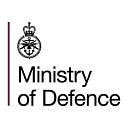The First World War continues to inspire innovation and collaboration in today’s Armed Forces, 100 years on
As we mark 100 years since the end of the First World War this Sunday, many of us in the armed forces will reflect upon the legacies of that conflict and others.
For me, as Joint Forces Commander, two lessons stand out, in the form of innovations and partnerships. The First World War was a conflict that prompted rapid leaps forward in technology, from the birth of the tank to the growth of air warfare.
Alongside technological gains there have been profound developments in the way we serve those who serve us, which have benefited us right up to 2018.
In Afghanistan, for example, our state-of-the-art medical facilities at Camp Bastion used techniques first developed on the fields of Flanders. The methods of emergency blood transfusion and chains of evacuation for injured troops were ground-breaking and saved military and civilian lives.
The second area of partnership has been equally critical. Countries have gone to war in alliance for centuries, famously at the Battle of Waterloo and in the Crimean War. But even if countries are politically well-aligned, the process of moulding huge armies together into an effective force to fight a common enemy is a difficult thing to achieve. On the Western Front we gradually moved from entente cordiale to effective modern coalition.
By 1918 the armies of Britain and its dominions, the USA and France had grown together and moved closer towards a tight formal alliance. We learned that coalition warfare can’t be a simple mutual arrangement of a nation’s forces.
To triumph, there needs to be joint high commands, similar training and tactics, combined operations and the sharing of high-technology weaponry. It was a lesson well learned, and a generation later we saw successful and remarkable integration between allies on the beaches of Normandy.
Since 1918 the world has become smaller. Today countries rely on each other for trade, technological research and mutual defence more than ever. It is timely that, a century after we fought alongside our allies, we are engaged in joint training exercises with partners across the globe.
British troops have just visited Japan to train for the very first time. In Oman we are testing the UK and Oman’s ability to operate together in an exercise involving aircraft, vehicles, ships and around 45,000 UK military personnel. In Norway 40,000 troops from NATO nations including the UK are taking part in the biggest exercise there since the 1980s.
It is inconceivable that we will ever again have to fight the attritional, large-scale battles seen at the Somme and at Passchendaele. But we are faced daily by a range of intensifying threats, which is why our partnerships and alliances such as NATO are firmly at the heart of our defence.
Maintaining the dynamics of coalition is an essential investment in reducing the risk of another conflict of the scale and cost of the First World War.
General Sir Chris Deverell is Commander of Joint Forces Command
